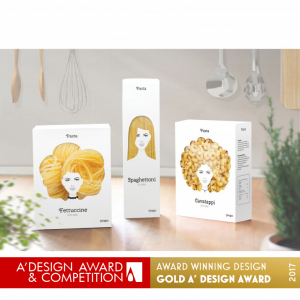If you are following packaging trends this year, one that stood out to me was the use of transparent packaging. With all the information that normally comes together on a product packaging, I feel that using a transparent one can be a big challenge for brands. However, I can see how using it also has a few advantages, which may outgrow the difficulties when it comes to sales and brand adherence.
Why would you should consider using transparent packaging, you ask? I bring you a few ideas on why this may be important for your product:

- Having a clear packaging allows customers to “peek” into the product before purchasing, so they are able to better identify product ingredients, colors, texture, format… which can help verify that it meets their expectations and guide their buying decision. What you see is then what you get, there is no room for interpretation.
- A transparent packaging transforms the product itself in a visual element of the packaging design. For the beauty and cosmetics markets, where the product is often visually appealing, creating an idea of luxury, having transparent packaging can help drive more attention on to the shelves. But other industries have jumped to this wagon lately and food brands have for instance. also been more creative in how they were showing their product inside the packaging, making it stand out in a fun way. See example of Pasta Nikita.
- Transparency can create a sense of honesty and openness between the brand and the customer, building up trust in the brand. It gives an idea to the buyer that there is nothing to hide and that your brand believes so much in their product they are showing it to you “naked” from other elements that will distract you from the product itself.
- If you are looking at making your product look and feel premium or high-end, transparent packaging is a way to go, as it often gives products a sleek and modern appearance. This can communicate quality and sophistication, which can translate into your ideal customer base and your product price tag.
As mentioned, brands will still need to make sure that they fit all required information into their (transparent) packaging. Here are some ideas on how to make this work:
- Use labels in a strategic way, place them where they don’t obstruct the view of the product such as the side or bottom of your packaging, or use smaller labels (using expansible ones).
- Print onto the packaging: using screen printing or an inkjet printer that can print directly onto plastic or other materials you can include the information directly into the packaging with color contrast.
- What about clear stickers or holograms? These can be attached over the packaging to provide the necessary regulatory details without obstructing the view of the product. This approach can be effective for adding required information, such as product expiration dates or manufacturing details that may be necessary to add at the end point of the printing process, and do not need to have a beautiful design, but be practical.
- Use QR Codes to bring customers to less relevant information. Using QR Codes is one of the Smart packaging initiatives that many companies have started using. With limited space, and lots to tell, technology can be your friend and a simple click can bring you to a wealth of information about the product. Think of adding details about the ingredients, giving ideas on recipes to combine with the product, or including information on a contest. Rather than cramping your package with all this, you can easily refer to it on a QR code and direct people to your website.
- Use packaging inserts: if online seems a little bit too fancy or your target audience is not that tech savvy, there is always the option for old fashioned paper inserts. Usage instructions, warnings, ingredients, an upcoming event, or a contest… all can be advertised through an insert included inside of the packaging or attached to the outer side of the packaging, as long as it does not obstruct the actual product view.
- Use textured packaging: with embossing or debossing on your packaging you will be able to add a texture to it, making it a product customers will want to touch and hold. It is unusual, and it brings an extra sense into the product experience, touch.
There are probably more ideas on how to make a transparent packaging work and still make sure you follow the regulations and include all mandatory information, without losing quality and attractiveness on your product. If you are using something else than the suggestions above, will you let me know? I am really interested in learning more on how to make a product stand out without cluttering the packaging and making your brand show transparency and trustworthiness through it. You can also share examples of transparent packaging that are working out for you/other brands you admire, or that simply made you laugh.
If you are interested in the topic and want to read more about “How seeing products on, or through, the packaging influences consumer perceptions and purchase behavior” take a look at the Oxford published paper here. Enjoy!
